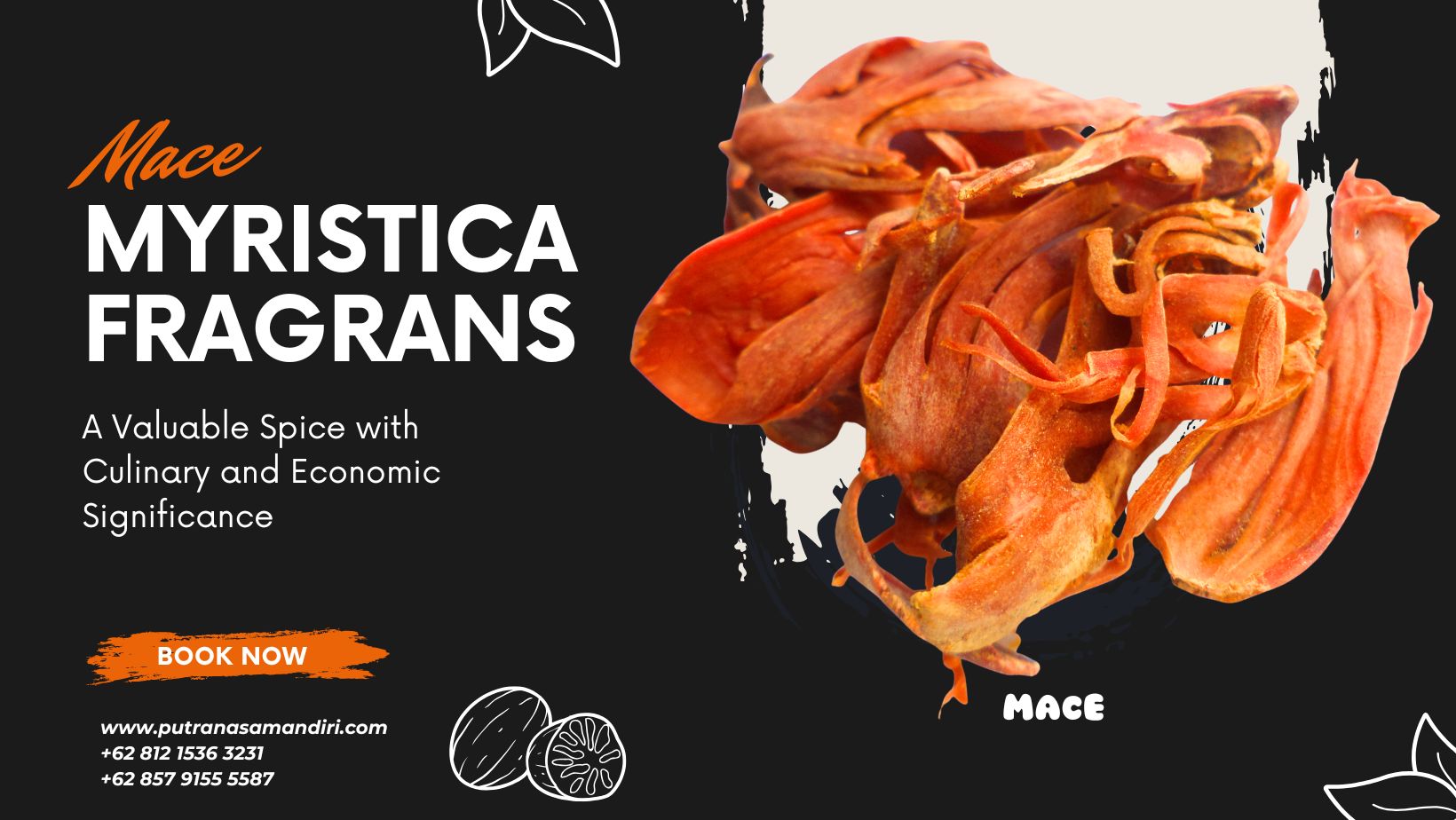Home mace: a valuable spice with culinary and economic significance
mace: a valuable spice with culinary and economic significance

Mace: A Valuable Spice with Culinary and Economic Significance
MaceSpice,Nutmeg,IndonesianSpices,PutraNasaMandiri,SpiceExport,SustainableFarming,FoodSafety,AromaticSpices,GlobalSpiceTrade,PremiumMaceMace is the dried, lacy aril that surrounds the nutmeg seed, both of which are derived from the Myristica fragrans tree. Known for its vibrant crimson to orange-red color and warm, aromatic flavor, mace is used widely in culinary, pharmaceutical, and cosmetic applications. In addition to flavoring food, mace also contains essential oils with potential health benefits.
Indonesia, particularly the Maluku Islands (also known as the Spice Islands), is the native habitat of the nutmeg tree and remains one of the world’s primary producers of nutmeg and mace. The country’s tropical climate and fertile soil provide optimal conditions for cultivating high-quality mace.
The quality of mace is assessed based on several criteria:
-
Color: High-grade mace exhibits a bright red to deep orange hue.
-
Aroma: A strong, fresh, and aromatic scent is desirable.
-
Essential Oil Content: Higher oil content generally indicates stronger flavor and aroma.
These quality characteristics are influenced by factors such as cultivation practices, harvesting time, drying methods, and post-harvest handling.
In regions like North Sulawesi, studies have evaluated the quality of nutmeg and mace, finding that while many products meet the Indonesian National Standard (SNI), issues such as aflatoxin contamination have been identified. Aflatoxins are toxic compounds produced by certain molds and can pose serious health risks. To mitigate this, producers must adhere to strict quality control and food safety protocols, including:
-
Proper drying and storage to prevent mold growth
-
Regular laboratory testing for contaminants
-
Compliance with international food safety standards (such as HACCP or ISO certifications)
Mace is a high-value spice in the global market. It is used not only in food processing but also in pharmaceuticals (due to its antimicrobial and anti-inflammatory properties) and cosmetics (as a natural fragrance and preservative). In countries like Grenada, mace contributes significantly to agricultural exports.
Indonesia has the potential to strengthen its position in the global spice trade, but challenges include:
-
Maintaining consistent product quality
-
Meeting stringent international food safety requirements
-
Ensuring sustainable farming and ethical labor practices
PT. Putra Nasa Mandiri: Contributor to Indonesia’s Spice Exports
Established in 2010, PT. Putra Nasa Mandiri is an Indonesian company involved in agriculture, plantation, and fishery product exports. The company specializes in the supply of mace and is committed to maintaining high standards throughout the production chain—from farm to packaging.
Key practices include:
-
Quality Assurance: Regular inspection and grading of mace to ensure consistency
-
Food Safety Monitoring: Laboratory testing for contaminants including aflatoxins
-
Sustainability: Support for local farmers and eco-friendly cultivation techniques
-
Logistics and Export Readiness: Well-managed supply chains to ensure timely delivery and regulatory compliance
Mace is more than just a culinary spice—it is a valuable commodity with a global demand. Indonesia's long-standing tradition in nutmeg cultivation, along with its favorable climate and soil, positions the country as a key player in this industry. By implementing high-quality standards and food safety measures, Indonesian producers can meet the growing international demand for safe, premium mace.
For more information about Indonesian mace and export-grade supply, you can visit putranasamandiri.com.